When you hear "affordable website design in Dubai," it’s easy to think of simply finding the lowest price tag. But that's not the full picture. True affordability is about getting the absolute best value for your money—investing smartly in the features that will actually grow your business, without wasting a dirham on bells and whistles you don't need.
This guide is here to help you navigate that process, so you can make confident, informed decisions for your company.
Decoding The True Cost Of Your Website
In a market as fast-paced as Dubai, a professional website isn't just a nice-to-have; it's a core business asset. Too often, business owners treat it like a one-off purchase, similar to buying desks for the office. That’s a mistake.
A much better way to think of your website is as your hardest-working salesperson. It’s the one team member that never sleeps, working 24/7 to greet potential customers, explain your services, and bring in new leads.
When you invest in a well-built website, you're not just buying a digital leaflet. You're building a powerful engine for growth, one designed to deliver a real return. This means shifting your mindset from "what's the cheapest?" to "what value does this bring to my business goals?"
Why Your Digital Presence Matters More Than Ever
It’s no secret that everyone is online, and the demand for professional websites is climbing. In fact, the UAE's graphic design market, which web design is a big part of, is expected to hit around AED 2.4 billion by 2025. This boom is driven by a massive push for digitalisation and a thriving start-up scene where a solid online footprint is essential to even get off the ground.
This just goes to show how crucial effective and affordable website design is in Dubai's economy. If you're curious, you can explore more about the UAE's design industry trends to get a feel for the market.
So, let's break it all down. In this guide, we’ll walk you through everything you need to know:
- Understanding Real Costs: A transparent look at what actually drives the final price.
- Non-Negotiable Features: The essential elements your site needs to do its job.
- The Development Process: A step-by-step look at how a website goes from an idea to launch day.
- Selecting the Right Agency: Practical tips for finding a partner who gets your vision and respects your budget.
Think of it this way: a website is more than just code and nice images; it's the digital heartbeat of your business. Its entire purpose is to attract people, keep them engaged, and turn them into loyal customers. It’s one of the most important investments you’ll make.
Our goal is to pull back the curtain on getting an affordable, high-performing website in Dubai. By the time you're done reading, you’ll know exactly how to pick a solution that fits your budget and becomes a true engine for your business's growth.
Breaking Down Website Design Costs in Dubai
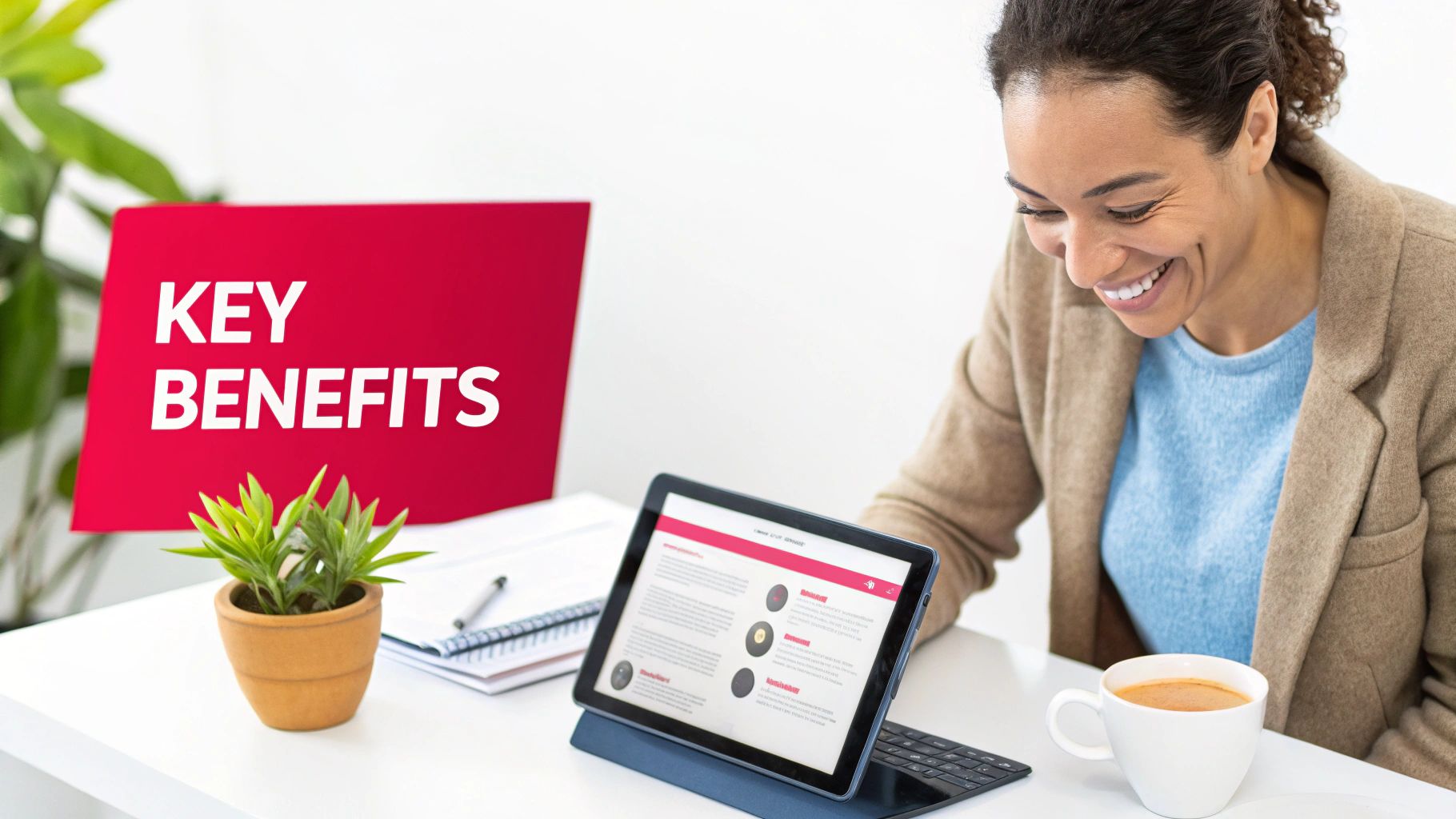
Trying to understand what an affordable website design in Dubai really costs can feel like hitting a moving target. The truth is, there's no single price tag. The final quote is always a sum of its parts, each one shaped by what your business actually needs.
Think of it like building a house. A simple, functional starter home will have a very different budget from a custom-built villa with all the bells and whistles. Your website is no different. The choices you make from the start will directly influence the bottom line. Let’s pop the bonnet and see what drives the cost.
Core Design and Development
This is the big one. How your website is actually built forms the foundation of the entire project's cost and complexity.
- Template-Based Design: This is your fastest and most budget-friendly path. We take a high-quality, pre-built template on a platform like WordPress and customise it to fit your brand. It's a fantastic choice for start-ups or small businesses who need to get online quickly without a hefty upfront investment.
- Custom-Built Design: Here, we start with a blank canvas. Every single element—from the layout and user flow to the backend code—is designed and built just for you. This gives you ultimate control and scalability, but it naturally costs more because of the significant time and expertise involved.
The number of pages also matters. A straightforward five-page site outlining your services will cost less than a sprawling 50-page corporate portal. Each new page means more design work, content creation, and development time.
Functionality and Advanced Features
Once you have the basic structure, adding special features introduces new layers of complexity—and cost.
E-commerce is the perfect example. Building a full online store isn't just about making things look pretty. It involves integrating secure payment gateways, a shopping basket, product pages, and inventory systems. With global e-commerce sales expected to reach $6.3 trillion in 2024, it's a powerful investment, but a significant one.
Other features that can affect the price include:
- Booking Systems: A must-have for clinics, salons, or consultants. These systems allow clients to book appointments directly on your site.
- Multilingual Support: In a diverse city like Dubai, offering your site in both English and Arabic is often a smart move, but it does add to the project's scope.
- Content Management System (CMS): The platform your site runs on makes a difference. WordPress is a versatile and popular choice, while specialised platforms like Shopify are built for e-commerce and come with their own pricing.
Your website is a digital asset, and every component is an investment. The trick is to put your money into the features that will actually drive growth and help you meet your business goals.
The Often-Overlooked Ongoing Expenses
This is a classic rookie mistake: focusing only on the upfront build cost and forgetting about what it takes to keep the lights on. Factoring in these recurring expenses from day one is essential for the long-term health of your website.
Think of these not as extras, but as essential running costs for any professional online presence.
- Domain Name Registration: This is your website's address on the internet (like yourbusiness.ae). It’s a small but vital annual fee. The name itself is an asset, and you can get a rough idea of its worth with a domain name value estimator.
- Web Hosting: This is the service that stores all your website's files and makes them available to visitors. Costs vary widely depending on the traffic you expect and the performance you need.
- Maintenance and Support: Just like a car, your website needs regular tune-ups. This means software updates, security checks, backups, and bug fixes to keep it running smoothly and securely. Many agencies offer monthly plans to take care of this for you.
To give you a clearer picture, here’s a general breakdown of what you might expect to pay for different types of websites in Dubai.
Typical Website Design Cost Breakdown in Dubai (AED)
This table offers an estimated cost range for various website projects. It's designed to help you see where your business might fit and plan your budget accordingly.
| Website Type | Description | Estimated Cost Range (AED) |
|---|---|---|
| Basic Brochure Website | A simple 3-5 page informational site. Ideal for showcasing services and contact details for a small business or start-up. | AED 3,000 – AED 7,500 |
| Business/Corporate Website | A more comprehensive site with 10-20 pages, including a blog, detailed service pages, and advanced contact forms. | AED 8,000 – AED 25,000 |
| E-commerce Website | A full online store with product listings, a shopping basket, payment gateway integration, and inventory management. | AED 15,000 – AED 60,000+ |
| Custom Web Application | A bespoke platform with unique functionality, user accounts, and complex backend processes (e.g., a booking portal). | AED 40,000 – AED 150,000+ |
Disclaimer: These are industry estimates. The final cost will always depend on the project's specific requirements, features, and the agency you choose.
By understanding these different cost drivers—from the initial design to ongoing upkeep—you can set a realistic budget. This ensures your investment in an affordable website design in Dubai delivers real, lasting value without any nasty surprises down the road.
Essential Features Your Dubai Website Must Have
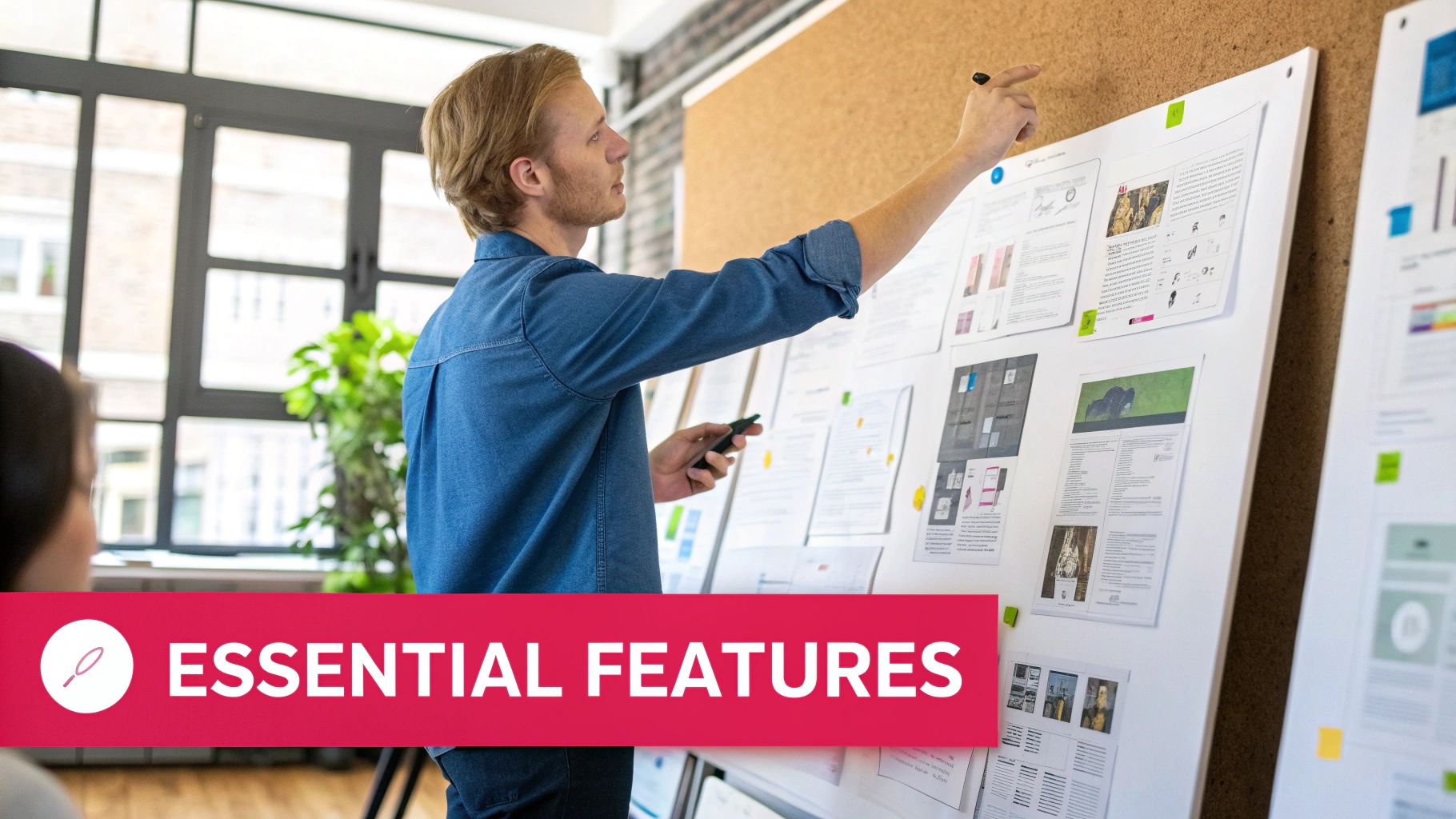
Going for an affordable website design in Dubai shouldn't mean you have to compromise on the essentials. A budget-friendly website can, and absolutely must, still be a powerful tool for your business. There are a few features that are simply non-negotiable if you want to stand a chance in this market and actually convert visitors into paying customers.
Think of it like building a house. You wouldn't skip the foundation to save money, right? These core features are your website's foundation—they ensure it doesn't just look pretty, but that it works hard for you from the moment it goes live.
Mobile-First Design Is Non-Negotiable
Here in the UAE, the smartphone isn't just a device; it's the primary gateway to the internet. People use their phones for everything from a quick social media check to researching local services and making online purchases. The old way of designing for a desktop and then trying to squeeze it onto a mobile screen just doesn't cut it anymore.
A mobile-first approach is the only way to go. This means your website is designed for the smallest screen first, then thoughtfully expanded for tablets and desktops. By 2025, mobile devices are projected to drive over 72% of all internet traffic in the UAE. That number alone should tell you everything you need to know about where your focus should be. A seamless mobile experience is directly tied to everything from engagement to sales.
Lightning-Fast Loading Speeds
We’ve all been there. You click a link, wait… and wait… and then you give up and leave. A slow website is a business killer. It's one of the fastest ways to lose a potential customer before they’ve even seen what you have to offer.
Speed isn't just a nice-to-have; it's critical for two big reasons:
- Keeping Visitors Happy: A snappy, responsive site feels professional and keeps people engaged.
- Getting Found on Google: Search engines like Google actively favour websites that load quickly, ranking them higher in search results.
Any decent affordable website design package must focus on optimising images, writing clean code, and using quality hosting to get those pages loading in a flash.
Intuitive Navigation and User Experience (UX)
When someone lands on your site, they should be able to find what they're looking for without thinking too hard. If they have to hunt for your phone number or can't figure out your services, they'll just click away to a competitor. This is where great user experience (UX) and user interface (UI) design make all the difference.
A great website anticipates what your visitor wants and guides them there effortlessly. The goal is to make the journey from landing on your homepage to becoming a customer as smooth and frictionless as possible.
In Dubai's crowded market, your site's usability is what sets you apart. This means incorporating top user experience (UX) best practices, like creating a logical menu, designing clear page layouts, and using easy-to-read fonts. These are the small details that have a massive impact.
Foundational SEO and Robust Security
Finally, let's talk about two crucial elements that work behind the scenes. On-page SEO is the practice of optimising things like your page titles, headings, and image descriptions. This helps search engines understand your content and show it to the right people. Any affordable website design worth its salt will build these basics in from the very beginning.
Security is just as vital. Every website needs an SSL certificate—it's what adds the "s" to "http" and displays that little padlock icon in the address bar. It encrypts data passed between your site and its visitors, signalling that you're a trustworthy business. This is especially important if you handle any customer information, a key consideration for anyone exploring our guide on e-commerce website design in Dubai.
Walking Through the Web Development Process
Kicking off a website project can feel a bit overwhelming, like starting a long road trip without a map. But when you know the route and what to expect at each stop, the whole journey becomes a lot less stressful and a lot more exciting. A clear, structured process is the secret sauce to getting a great, affordable website design in Dubai, making sure every decision has a purpose and every dirham is spent wisely.
Think of it like building a house. You wouldn't just start throwing up walls without a solid architectural plan. The same principle applies here. A step-by-step roadmap ensures your finished website isn't just a pretty face but is built on a solid foundation that perfectly matches your business goals. Let’s take a look at what that roadmap looks like.
Stage 1: Discovery and Strategy
This first step is, without a doubt, the most important one. Before we even think about design mock-ups or lines of code, we need to agree on the destination. This is where we get together and define exactly what a "win" looks like for your business.
We’ll dig into your goals, figure out who your ideal customer is, and take a good look at what your competitors are doing. Are you trying to get more leads? Sell products online? Or maybe just build up your brand's reputation? The answers to these questions become the strategic bedrock for everything that follows, ensuring we start the project pointed squarely in the right direction.
Stage 2: Wireframing and Prototyping
Once we have a solid strategy, the next move is to sketch out a blueprint for your website. This is where wireframing enters the picture. A wireframe is a simple, black-and-white layout—like a skeleton of your site's pages. It’s all about structure, user flow, and where things go, without getting distracted by colours, fonts, or images just yet.
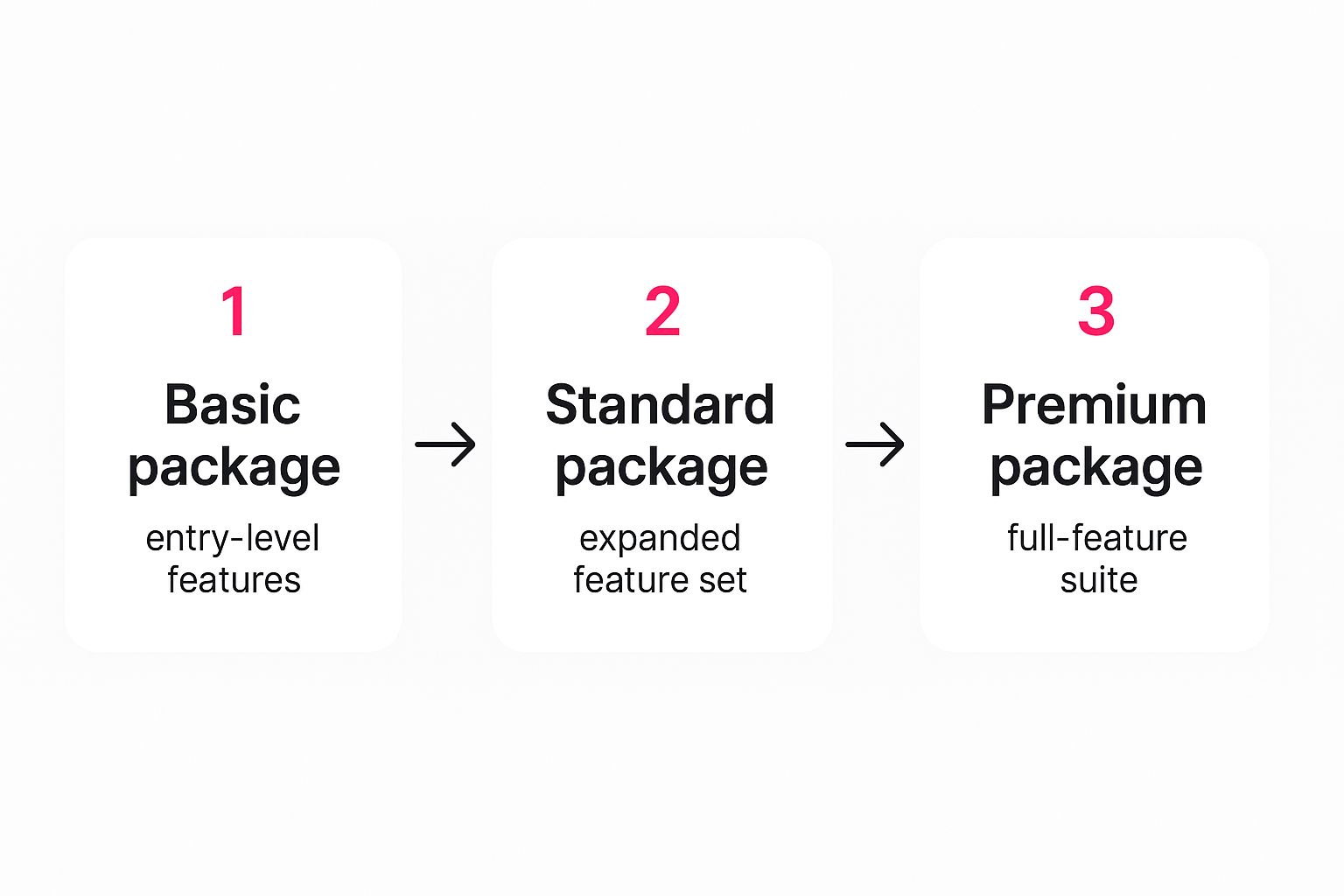
This blueprint lets us map out the placement of key elements like menus, call-to-action buttons, and contact forms. It helps us make sure the user's journey feels natural and intuitive before we commit to the visual design. It's just like finalising the floor plan of your new home before you start arguing over paint colours.
Stage 3: UI and UX Design
With the blueprint approved, it’s time to bring it to life with colour and personality. This is where User Interface (UI) and User Experience (UX) design come into play. They sound similar, but they have distinct jobs:
- UI Design is the look and feel. It’s the colours, the typography, the images—everything that gives your site its visual brand identity. It's the "style" of your website.
- UX Design is all about how the site feels to use. Is it easy to navigate? Is it confusing? Is it enjoyable? It’s focused on making the entire experience smooth and effective for the visitor.
A truly great website gets both right. It looks fantastic and is an absolute breeze to use. This one-two punch is crucial for keeping people on your site and gently guiding them toward taking action.
Stage 4: Development and Content Integration
Design signed off? Great. Now our developers step in to turn those static visual designs into a real, working website. They're the ones writing the clean, efficient code that makes everything tick behind the scenes, ensuring your site is fast, secure, and looks great on any device.
At the same time, we start the content integration process. This means we'll take all your text, photos, and videos and carefully place them on the right pages. After all, brilliant design is only half the battle; high-quality content is what actually speaks to your audience and tells your story.
The development phase is where the vision truly becomes a tangible reality. It's the meticulous process of transforming static designs into a dynamic, interactive digital experience that works flawlessly across all devices.
Stage 5: Testing and Launch
Before we pop the confetti, your website goes through some serious "boot camp" testing. Our quality assurance team goes over every single link, form, button, and page with a fine-tooth comb. They test it on different browsers, on phones, on tablets—you name it. The goal is to hunt down and squash any bugs or glitches before your customers ever see them.
Once it passes every test and gets your final thumbs-up, we're ready to launch. We push your new website live to the world, and your digital doors are officially open for business. But our work isn't done. A successful launch isn't the finish line; it’s the starting point of your website's journey and our ongoing partnership.
How To Choose The Right Dubai Web Design Agency
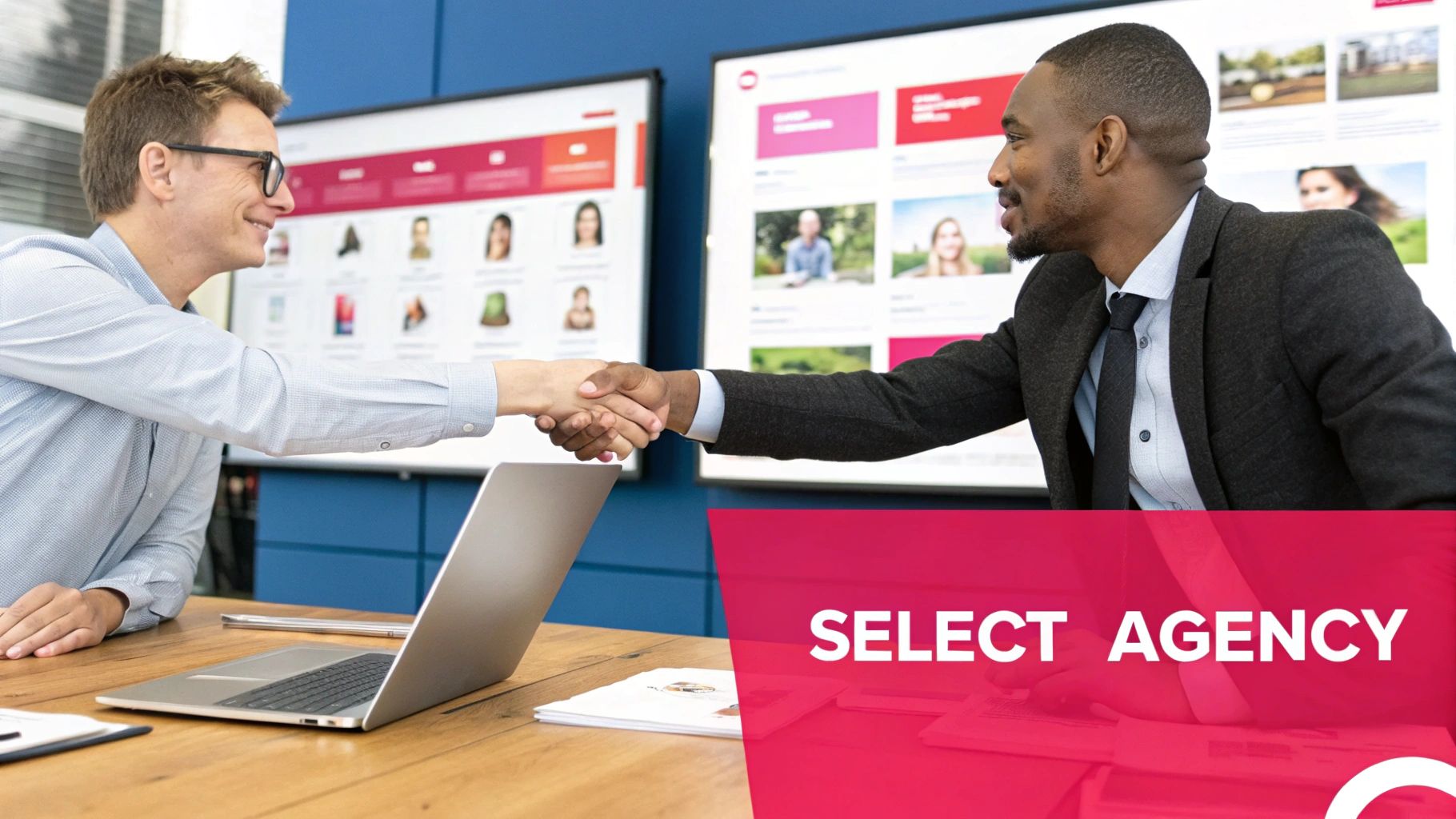
Picking a partner for your affordable website design in Dubai is, without a doubt, the biggest decision you'll make. Get it right, and the agency becomes a true extension of your team—a guide invested in your success. Get it wrong, and you could be facing missed deadlines, a website that doesn't deliver, and a whole lot of headaches.
Think of it like hiring a contractor to build your dream home. You wouldn't just go with the cheapest quote. You'd want to see their past projects, understand their process, and feel confident they can bring your vision to life. You need a partner who's skilled, transparent, and focused on building something of lasting value.
Evaluate Their Portfolio With A Critical Eye
An agency's portfolio is your first stop. It’s their digital showroom, revealing their style, technical skills, and the kind of clients they attract. But don't just get swayed by flashy designs.
You need to dig a little deeper. Ask yourself:
- Is their work relevant to my business? Have they worked in your industry or with companies of a similar size? An agency with a track record of building great sites for local service businesses will understand your specific needs far better than one that only works with enterprise-level clients.
- Do the websites actually work well? Don't just look at pictures. Go to the live websites. Click around. Are they fast? Is the navigation intuitive? How do they look on your mobile? This is the real test of their work quality.
- Is there variety in their designs? If every site in their portfolio looks like a carbon copy of the last, it could signal a cookie-cutter, template-based approach. A strong portfolio should display a range of unique styles, each adapted to a different brand.
Ask The Right Questions During Consultations
Once you’ve got a shortlist, the consultation is your chance to really vet them. This isn't just about getting a price; it's a chemistry check. Come to these meetings armed with good questions.
Your main goal is to get a feel for their process and how they communicate. You want to know exactly how they'll handle your project from the first kick-off meeting to the final launch. If you're looking for an agency that can truly steer your project to success, it's worth understanding what sets apart a top-tier website development company.
An agency’s willingness to answer questions openly and honestly is a strong indicator of their transparency. If they are vague about their process or avoid talking about post-launch support, consider it a red flag.
Dig Into Testimonials And Case Studies
Finally, look for social proof. A portfolio shows you what an agency can build, but testimonials and case studies tell you what it’s like to work with them. This is where you get the real story on their reliability and client service.
Look for reviews that go beyond a simple "they did a great job." The best ones talk about specifics—their communication, how they handled feedback, whether they stuck to the timeline, and most importantly, the results the new website achieved. A string of glowing reviews from other Dubai businesses is one of the clearest signs you've found a partner you can trust.
Future-Proofing Your Website Investment
Getting your website live is a huge milestone, but it’s really just the starting line. To get the most out of your investment in an affordable website design in Dubai, you have to think long-term. A website isn't a static brochure you print once and forget about; it’s a living, breathing part of your business that needs consistent care to keep working for you.
Thinking ahead from day one is what ensures your site continues to bring in business long after it launches. This means a mix of regular upkeep, smart planning for future growth, and keeping an eye on the digital trends shaping the fast-paced Dubai market. Without this, even the most stunning website can become obsolete or a security risk surprisingly quickly.
The Importance of Ongoing Maintenance
Think of your website like a high-performance car. You wouldn't drive it for years without a service, right? Your site needs the same kind of regular attention to run smoothly and securely. This is probably the single most important thing you can do to protect your investment.
A good maintenance plan is like an insurance policy for your website, covering all the essential jobs that keep it in peak condition:
- Software Updates: Your content management system (CMS), along with its plugins and themes, needs to be updated regularly. This isn't just about new features; it's about patching security holes that hackers love to exploit.
- Security Scans: You want to find problems before they find you. Proactive scans for malware and other vulnerabilities stop cyberattacks in their tracks.
- Regular Backups: Things can and do go wrong. Having frequent, reliable backups means you can get your site back online in minutes, not days, if the worst happens.
A well-maintained website is a secure and reliable website. Skipping regular updates is like leaving the front door of your shop unlocked overnight—it’s an open invitation for trouble that can crush your reputation and your search rankings.
Planning for Scalability and Growth
A truly affordable website is one that can grow right alongside your business. You might start out with a simple five-page site today, but what happens next year when you want to add an online store or a complex booking system? A scalable website is built to handle that growth without you having to start from scratch.
This is where the quality of the initial build really shows. A site built on a flexible platform like WordPress, with clean code as its backbone, can easily be expanded. This foresight turns your initial investment into a solid foundation for the future, not a dead end. Plus, a scalable site naturally performs better, which is a massive help for your local SEO in Dubai.
Adapting to Evolving Digital Trends
Dubai doesn’t stand still, and neither does the digital world. To stay relevant, you have to be ready for what's coming next. Right now, we're seeing a huge shift toward more dynamic, engaging, and personalised user experiences, driven by the city's incredibly tech-savvy population.
This unique market has sparked a rise in hyper-personalised website designs. Smart agencies are using AI and data to serve up content based on a user’s location or past behaviour, which is a game-changer for local businesses. We’re also seeing more immersive features like 3D product views and augmented reality pop up, especially in competitive sectors like retail and real estate. To see what’s on the horizon, you can learn more about the latest website design trends. Building with these advancements in mind ensures your website stays modern, competitive, and effective for years to come.
Frequently Asked Questions
When you're looking for affordable website design in Dubai, you're bound to have a few questions. That's perfectly normal. To make things easier, I've pulled together some of the most common questions we hear from clients and answered them in plain English.
Let's clear up any confusion so you can move forward with total confidence.
How Long Does It Take To Build a Website?
This is the classic "how long is a piece of string?" question, but I can give you a solid idea. The timeline really hinges on how complex your website needs to be. For a simple, professional website with just a handful of pages, you're looking at a turnaround time of 2 to 4 weeks.
But if you're after something more ambitious, like a full-blown e-commerce store with lots of custom bells and whistles, the project could stretch anywhere from 6 to 12 weeks, sometimes longer. The biggest factors that speed things up or slow them down are how quickly you can provide feedback, how many rounds of changes we go through, and the sheer scope of what you need the site to do.
Can I Update My Website Myself After It Is Built?
Yes, one hundred per cent. We build your website for you, and that means putting you in the driver's seat. The vast majority of our projects are built on a user-friendly Content Management System (CMS) like WordPress.
This gives you the power to log in and easily update text, swap out images, or publish a new blog post without touching a single line of code. We won't just hand over the keys and disappear; we'll walk you through how to manage everything yourself.
A great website is a living asset. Having the ability to make your own updates ensures your content stays fresh and relevant, which is crucial for engaging your audience and supporting your SEO efforts.
What Ongoing Costs Should I Expect?
Smart question. Thinking about the long-term costs is key to finding a genuinely affordable solution. Beyond the initial build, there are really only three recurring expenses to budget for:
- Domain Name: This is your website's address on the internet (like
yourbusiness.ae). It’s a small annual fee to keep it registered to you. - Web Hosting: Think of this as the rent for your website's home online. It's what keeps your site live 24/7, and you typically pay for it monthly or annually.
- Maintenance Plan (Optional but Recommended): This is your website's insurance policy. It covers crucial security updates, software patches, and regular backups to protect your site from threats and keep it running flawlessly.
Factoring these into your budget from day one is a core part of planning for an affordable website design in Dubai.
Ready to build a website that delivers real results without breaking the bank? The team at Grassroots Creative Agency specialises in creating high-performing, budget-friendly websites tailored for Dubai businesses. Let's discuss your project and bring your vision to life.
